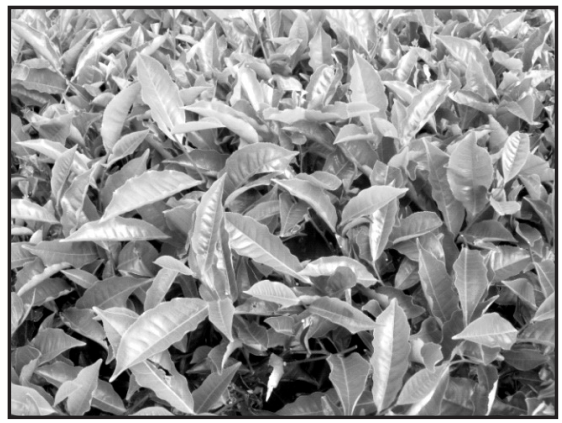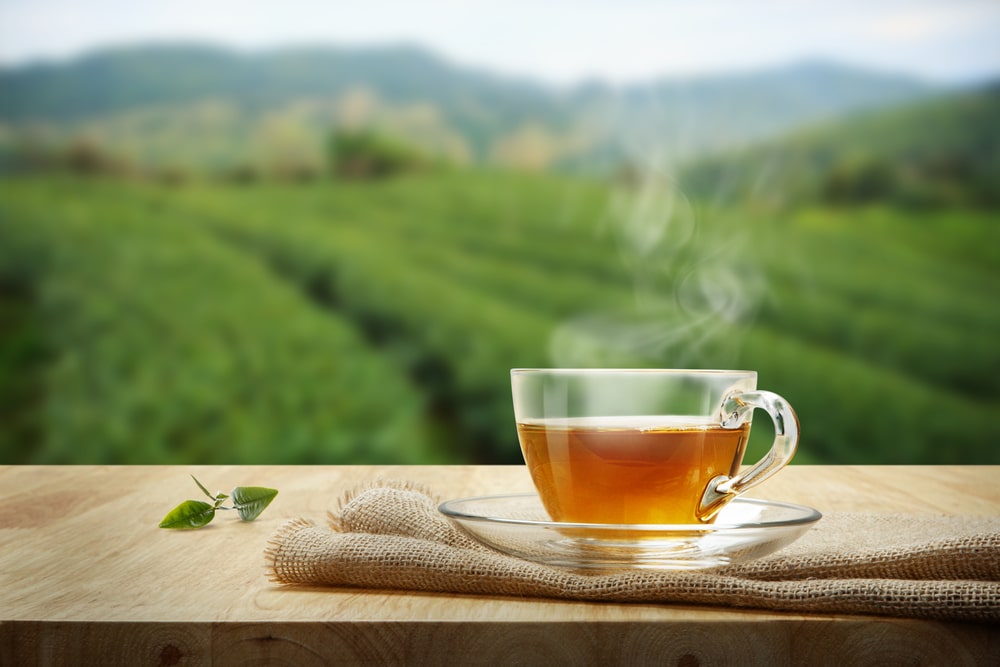Synonym: Camellia thea.
Biological source: Tea contains prepared leaves and leaf buds of Thea Sinensis Linn.
Family: Theaceae.
Geographical source: It is cultivated in India, Srilanka, Indonesia, China, and Japan. In India, it is cultivated in North-Eastern India (mainly in Assam and Bengal), South India (in Nilgiri, Palni, Annamalai hills in Tamilnadu, Kerala, and Karnataka states), and northwest India (in Dehradun, Almora, and Garhwal district of Uttaranchal, Kangra valley and Mandi district of Himachal Pradesh).
Cultivation and Collection of Tea:
The tea is available in two forms:
- Black tea
- Green tea
Black tea is available from India and Srilanka whereas green tea is available from China and Japan. Black tea is obtained by fermentation of fresh tea leaves which are further dried artificially.
Green tea is obtained by keeping tea leaves in a copper vessel and then drying artificially. It is a dried leaf of the bush which contains theine which gives a cheap and stimulation drink upon addition of boiling water with sugar and milk. So tea is the most important beverage crop of India. The basic requirements for the cultivation of tea leaves are deep, light, well-drained acidic soil (pH 5.8 to 5.4 or less), humid climate with annual rainfall (100 cm), altitude (2100 meters above sea level), the temperature is in the range of 21°C to 29°C is ideal for its cultivation. It is a shade-loving plant and it develops more vigorously when planted along with shady trees.
The propagation is mainly done by seeds that are sown in germination beds and developed saplings are transplanted into the open fields. The garden or field is regularly hoed and weeded for the better quality of the crop. Pruning is done from time to time for maintaining the proper shape of the tea bush. The yield can be increased by the use of nitrogenous fertilizers like ammonium sulfate. Tea does not favor water logging because roots of the tea plant get leached and deteriorate. Hence it is grown in hilly areas where water drains out easily.
The tea leaves along with bud are plucked by skilled labor preferably female laborers and dried by the artificial method. It needs to be stored in heat, light, air, and moisture-proof packing to remain fresh and mold-free.
Preparation of Green Tea:
The freshly collected tea leaves are exposed to air until most of the moisture gets removed. Then it is roasted and stirred continuously so that the leaves become moist and flaccid. These are passed through a rolling table to make rolling balls that should be moisture-free. The leaves are shaken and roasted in a copper vessel. The leaves turned dull green. The leaves are winnowed, screened, and graded into different varieties.

Macroscopic Characters of Tea:
The cultivated tea is a small evergreen shrub that is 1 to 1.5 meters in height. The wild plants are up to 6 meters in height. The leaves are dark green, lanceolate, elliptical, blunted at apex, serrate, hairy, and glabrous. Flowers are solitary and generally in a group of 2 to 3 leaf axils. It possesses a characteristic odor and bitter taste.
Chemical Constituents of Tea:
Its leaves contain caffeine (1 to 3 percent), theobromine and theophylline (in trace amount), gallotannic acid (15 percent) and an enzyme mixture known as these. The colour of tea leaves is due to the presence of gallotannic acid.
Caffeine is a white powder that is odorless and bitter. It is weakly basic. It has feeble solubility in water, alcohol, chloroform, and ether.
Caffeine is an example of a purine group of alkaloids that gives a positive Murexide test.
Chemical Test:
1. Murexide test: Take caffeine in a Petri dish and add hydrochloric acid with potassium chlorate. Heat it to dryness. Then this obtained residue is exposed to ammonia vapors, a purple color develops which disappears upon the addition of alkali solution.
2. When caffeine is treated with the tannic acid solution it produces a white precipitate.
Uses of Tea:
It is used as a central nervous system stimulant and as a diuretic. Caffeine possesses cerebral vasoconstrictor action hence it uses as a CNS stimulant. Caffeine is also used in migraine (given along with ergotamine tartrate).

Make sure you also check our other amazing Article on : Opium
